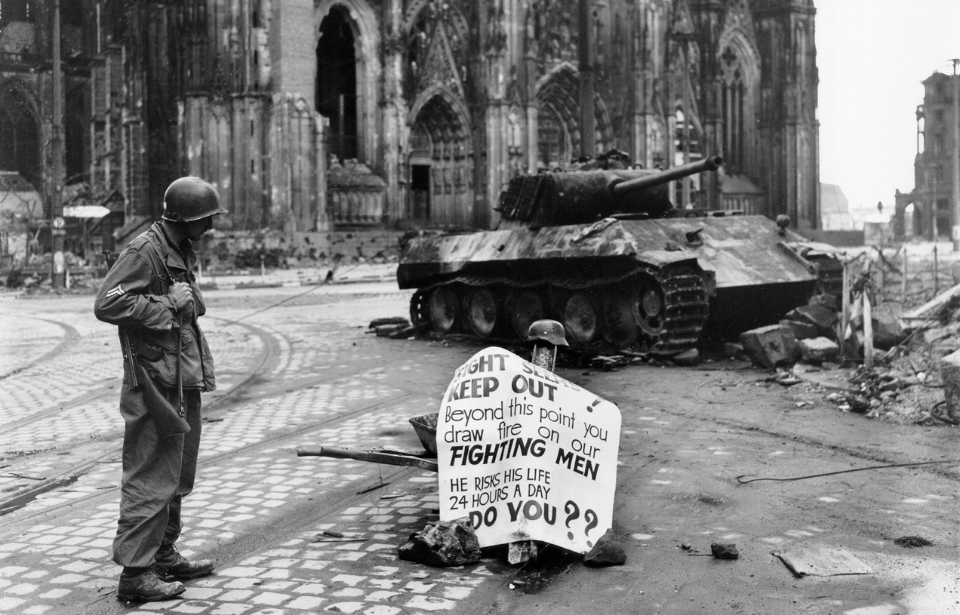Following the incredible success of the Allied landings in Normandy and their push through occupied territory, it became clear who was going to win the Second World War. Eventually, it came time to advance into Germany itself, fighting the enemy on their home turf. During the Battle of Cologne, US and German troops fought one of the most famous tank duels of all time, pitting a Panther against an M26 Pershing.
Operation Lumberjack
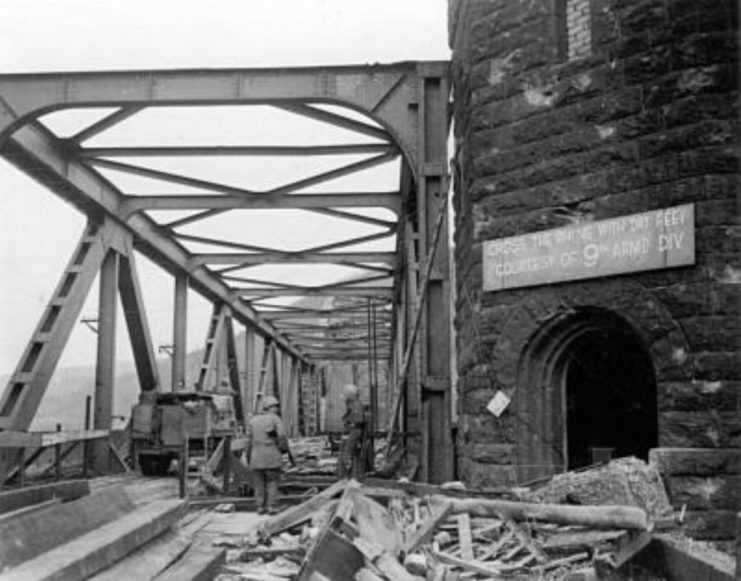
Essential to the Allied takeover of Germany was the movement of troops across the Rhine, where they could gain a foothold along the banks. This was the aim of Operation Lumberjack, launched by the First United States Army, with the hope of then continuing into Germany and capturing major cities that were still under enemy control, including Cologne.
The ancient city was unique, as it was built straddling the Rhine. Tasked with gaining control of the western side, the 3rd and 9th Armored Divisions, along with the 9th and 104th Infantry Divisions, fought their way to their target, beginning on March 1, 1945.
In advance of the American arrival and subsequent battle, Cologne experienced its final air raid, causing further damage to the already-destroyed city.
American advance into Cologne
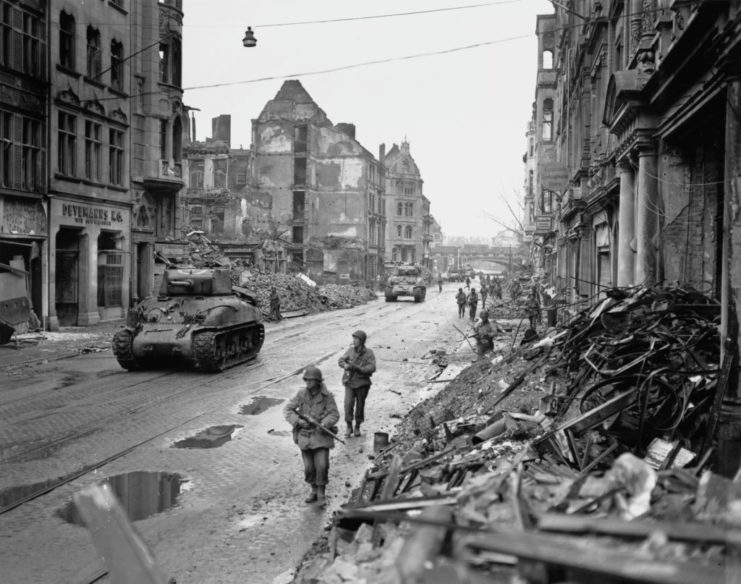
While very little still stood, Cologne’s magnificent cathedral still did. On March 3, Allied aircraft dropped pamphlets, which told citizens to remain in the city, as they had nothing to fear from the forthcoming troops.
Cologne was one of the first cities to become engaged in battle during Operation Lumberjack, with the Americans arriving on March 5 , 1945 from three different directions. Maj. Gen. Maurice Rose commanded the 3rd Armored Division, which, acting as the vanguard to the attack, came from the northwest.
The Armored Divisions worked in tandem with the infantrymen. The heavy vehicles provided much needed cover for the soldiers, who were then able to clear out enemies on foot and provide valuable intelligence.
Panthers, M4 Shermans and M26 Pershings roam the streets
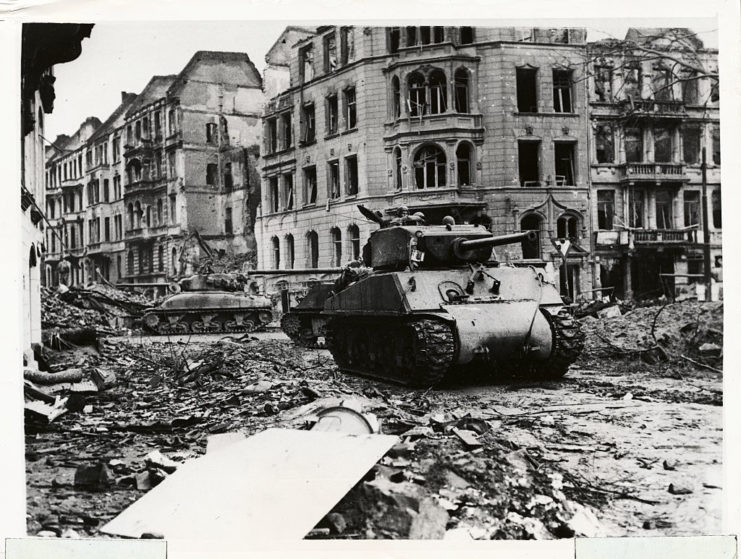
While the majority of the Germans had given into their inevitable loss, members of the 9th Panzer, 3rd Panzergrenadier and 363rd Volksgrenadier Divisions were determined to continue fighting. This didn’t stop the American advance. By March 6, 1945, the 3rd Armored Division had broken through much of the German defenses and into Cologne’s city center, where the still-standing cathedral rose into the sky.
Strategically located nearby, and completely out of sight of the Allies, was a German Panther tank, whose crew had prepared an ambush. Around them, the tanks of the 3rd Armored Division were clearing each street of combatants. Made up predominantly of M4 Shermans, they’d been struggling, as their armor couldn’t withstand German weaponry – a problem they’d been dealing with for years.
In response to this, the Americans had commissioned a new tank, the M26 Pershing, which had double the armor of the Sherman. It was far superior, but hadn’t seen much combat yet, something that would be a big advantage during the Battle of Cologne’s tank duel.
A German Panther takes out two American M4 Shermans
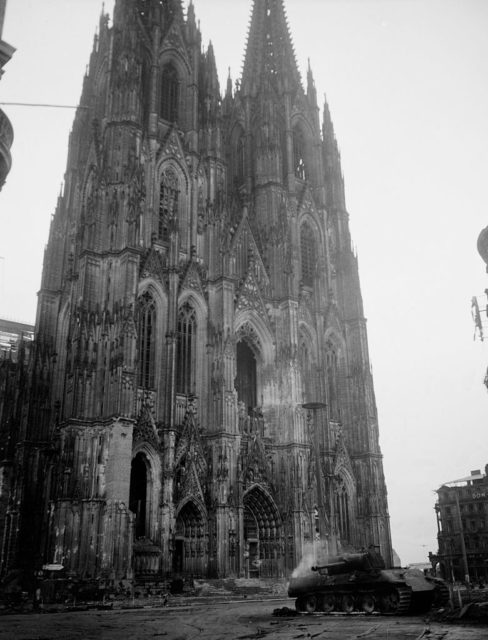
The Battle of Cologne’s tank duel began when two tanks with Easy Company, 3rd Armored Division traveling down a street hit a pile of debris. Pausing to call in a dozer, they unknowingly put themselves in the line of fire of the hidden Panther. The Germans took a shot at the first Sherman, easily destroying it. The second attempted to escape, but the Germans shot out its tracks before it could retreat. Before the next shot came, the tank crew escaped.
Having destroyed both targets, the Panther awaited the next unsuspecting Sherman – except it wasn’t a Sherman. Instead, it was a Pershing. The tank had been positioned nearby and heard radio chatter about the assault. Staff Sgt. Robert Earley decided they’d come at the Panther from a side street. The German tank’s commander, worried the Americans would attack from that exact direction, ordered his gunner to turn the turret in preparation.
Panther versus M26 Pershing
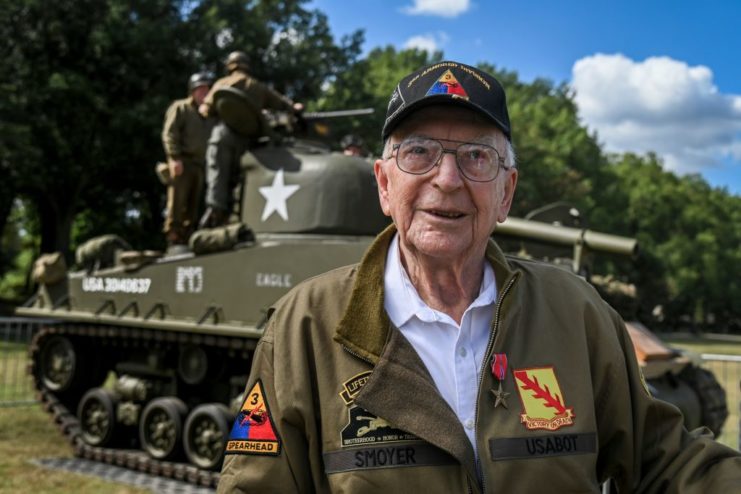
The Pershing gunner, Cpl. Clarence Smoyer, was told, “Shoot wherever you want. He’s just sitting there like he owns the place.” That’s exactly what he did. As they rounded the corner, they saw the Panther’s gun pointed right at them. Smoyer let off his shot, striking the enemy tank on its right side, yet the Germans didn’t do the same. Smoyer subsequently let off another two rounds, hitting just below the Panther’s gun and the spot between the tank’s upper hull and wheels.
Despite being hit three times, the German tank crew managed to escape. The Americans later learned the Panther commander had never seen a Pershing before and had assumed it was one of their own. As such, he’d told his men to hold fire.
More from us: Amazing Discovery – Captured T-34 Found Decades After It Was Abandoned By the German Army
What exactly makes this duel more famous than any other alteration of the war? The entire engagement was caught on video. Tech. Sgt. Jim Bates had been asked to accompany the Pershing crew that day, and he recorded the encounter between the Americans and the Panther, as well as their reactions afterward.
As for the tank crew, it wasn’t until 2019 that Pfc. Homer “Smokey” Davis, Cpl. John DeRiggi, bow gunner William “Woody” McVey and, of course, Clarence Smoyer were awarded Bronze Stars. Smoyer was the only member of “Eagle 7” still alive, so the families of his comrades accepted the medals on their behalf.
